Denver Zoo’s howler monkey and capybara have become surprise best friends
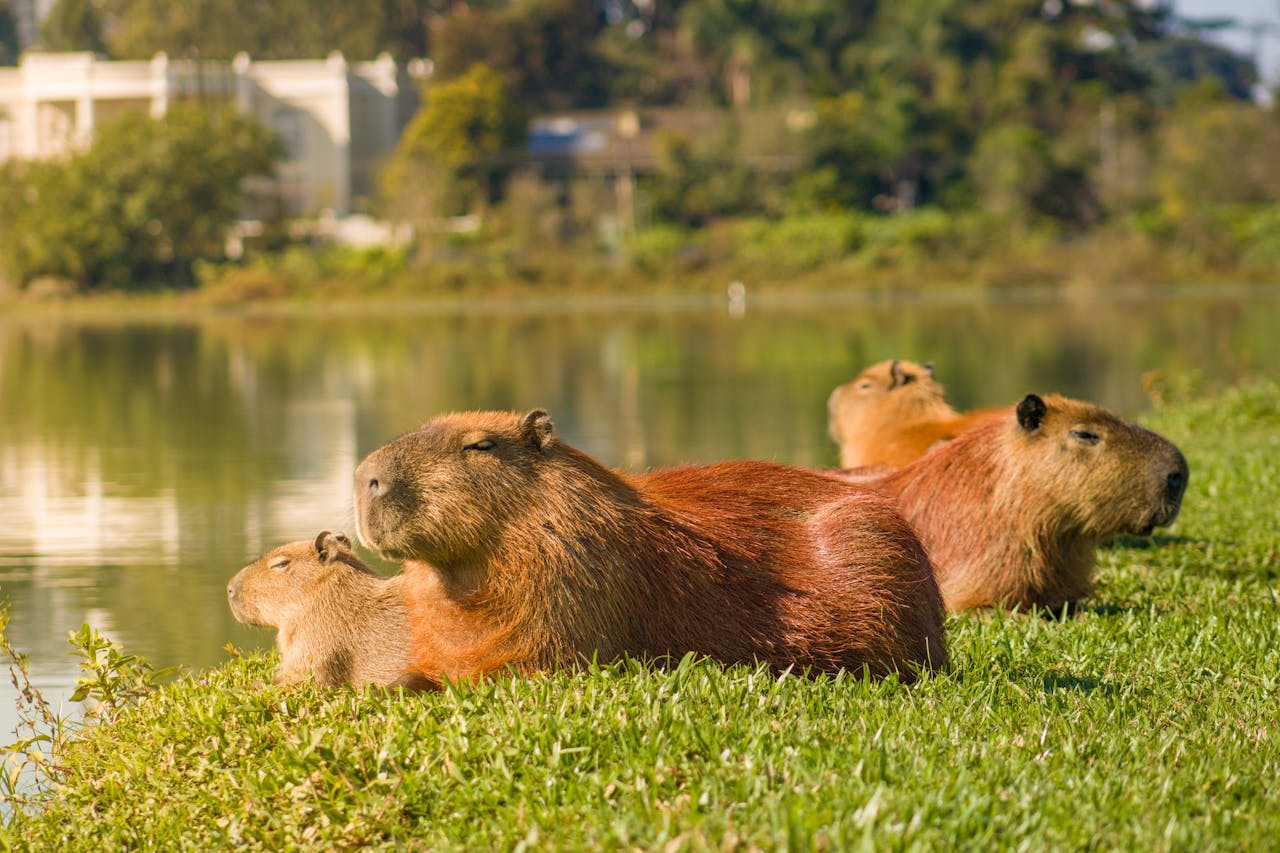
At the Denver Zoo, a quiet miracle unfolds every day—a friendship that shouldn’t exist, yet somehow does. A howler monkey and a capybara, two animals from completely different branches of the evolutionary tree, have become unlikely companions. Their story began when zookeepers introduced them into the same enclosure as part of an enrichment effort designed to mimic the diversity of their natural habitats. They didn’t expect anything beyond peaceful coexistence. But as days passed, something beautiful began to take shape. The monkey, curious and bold, approached the capybara with childlike fascination, hopping close, watching, learning. The capybara, serene and unbothered, allowed this strange, noisy creature to come near. And slowly, a bond grew—one that zookeepers could only describe as pure affection.
The howler monkey, known for its thunderous calls echoing through South American canopies, found quiet companionship in the grounded stillness of the capybara—the world’s largest rodent and one of its most gentle souls. They could not be more different: one arboreal and loud, the other aquatic and calm. Yet, in their differences, they discovered complementarity. Visitors often find the pair lounging in the sun, the monkey perched on the capybara’s back like a child riding an old friend through life. It’s not dominance—it’s trust. They eat together, nap together, and explore side by side, moving in sync like two instruments playing in harmony.
This friendship has captured global attention not only for its cuteness but because it stirs something universal in us. It’s hard not to watch them and feel that some ancient truth is being whispered through the bars of their enclosure—that love and understanding are not inventions of intellect but instincts of the soul. Their bond reminds us that peace isn’t manufactured by shared identity; it’s born when difference learns how to rest in the same space. And in an era where humanity feels increasingly divided, these two animals, wordless and simple, have become unlikely ambassadors of connection.
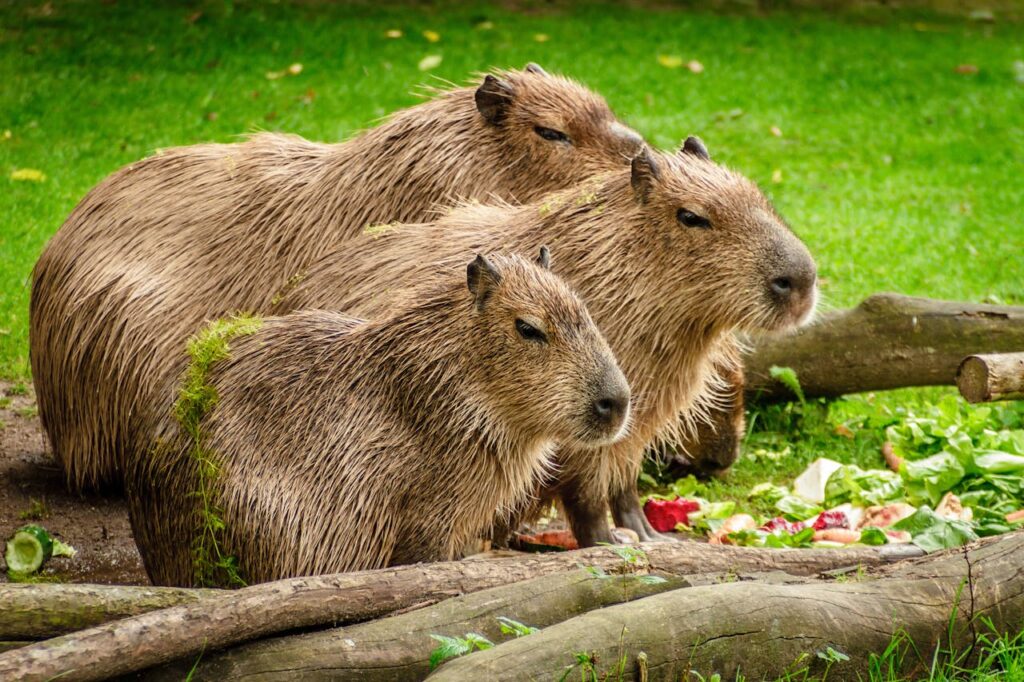
The Language Beyond Words
Animals don’t use words to build relationships—they use energy, rhythm, and respect. Watch them closely and you’ll see the art of communication stripped to its essence. The howler monkey’s curiosity is tactile—it reaches out, touches, tests. The capybara responds not with alarm but with acceptance. In the natural world, silence doesn’t mean absence of communication; it means presence without noise. There is something profoundly moving about witnessing beings from different worlds meet without expectation or agenda, finding peace in mutual awareness.
Across the animal kingdom, stories like this exist if we pay attention. Researchers have documented dolphins befriending sea turtles, dogs raising orphaned tigers, and elephants adopting sheep as companions. Science is slowly catching up to what nature has always known: that empathy is not uniquely human. In 2020, a study published in Animal Cognition confirmed that animals can display interspecies cooperation and empathy when placed in nurturing, non-threatening environments. These findings align perfectly with what’s unfolding in Denver. The zoo’s habitat isn’t just a stage—it’s an ecosystem of possibility, where curiosity can safely evolve into connection.
The howler monkey and the capybara are, in their way, teachers. Their friendship challenges our belief that relationships must be based on similarity. Instead, they show us that connection thrives in difference, that comfort grows not from sameness but from safety. There’s poetry in that lesson: a loud creature finding peace with the quiet one; an agile climber trusting the still swimmer. It’s the kind of unspoken wisdom that even philosophers might envy—because it’s lived, not theorized.
Their story also underscores how much we have yet to understand about consciousness in animals. Many scientists now acknowledge that emotion, empathy, and social awareness are far more widespread than once assumed. When we see this monkey rest its hand gently on the capybara’s back, we’re not just witnessing instinct—we’re seeing feeling, intention, and trust. Nature speaks softly, but its message is always profound: coexistence is not exceptional, it’s essential.
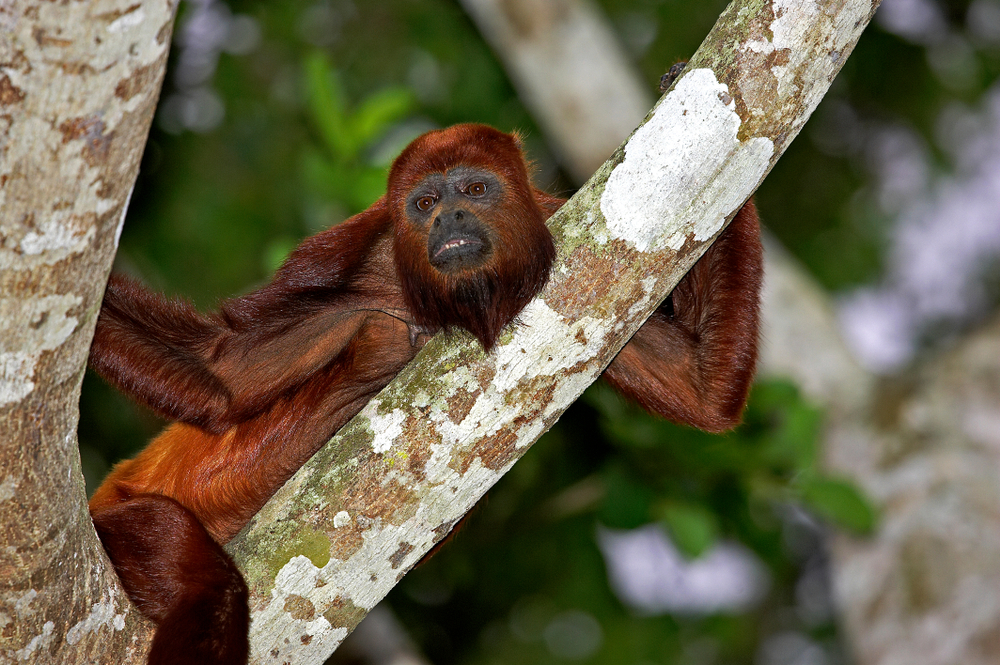
What This Says About Us
Every viral animal friendship reveals something about human longing. We smile when we see them—but that smile hides a deeper ache. What draws us to these stories is recognition. Deep down, we crave the kind of connection that doesn’t need explanation. We want to be loved, understood, and accepted, not because we are the same but because we simply are. The Denver Zoo’s howler monkey and capybara remind us of that primal truth. They don’t negotiate belonging; they live it.
Our world, in contrast, seems addicted to division. We argue across digital walls, choose sides before seeking understanding, and too often confuse identity with opposition. We build hierarchies out of fear, forgetting that difference is the very foundation of life’s beauty. The friendship between these two animals quietly dismantles that fear. They meet in the middle of their dissimilarity and call it home. There’s no dominance, no performance—just presence. Watching them, we’re reminded that connection doesn’t require agreement; it requires grace.
It’s easy to romanticize animals as simple, but perhaps it’s our complexity that blinds us to simplicity’s truth. The howler monkey doesn’t analyze the capybara’s intentions, and the capybara doesn’t second-guess the monkey’s motives. They trust, and in doing so, they thrive. What might our relationships look like if we learned to trust like that again? If we reached beyond judgment and fear to simply be with one another? These two animals show us what human progress so often forgets: that empathy is not a weakness—it’s our most advanced strength.
Their friendship is also a mirror reflecting what we’ve lost in the modern rush: presence. They don’t scroll, multitask, or compare; they simply exist, together, moment by moment. And in that stillness lies wisdom. To watch them is to remember how to breathe again—how to live slowly, how to meet life without armor.
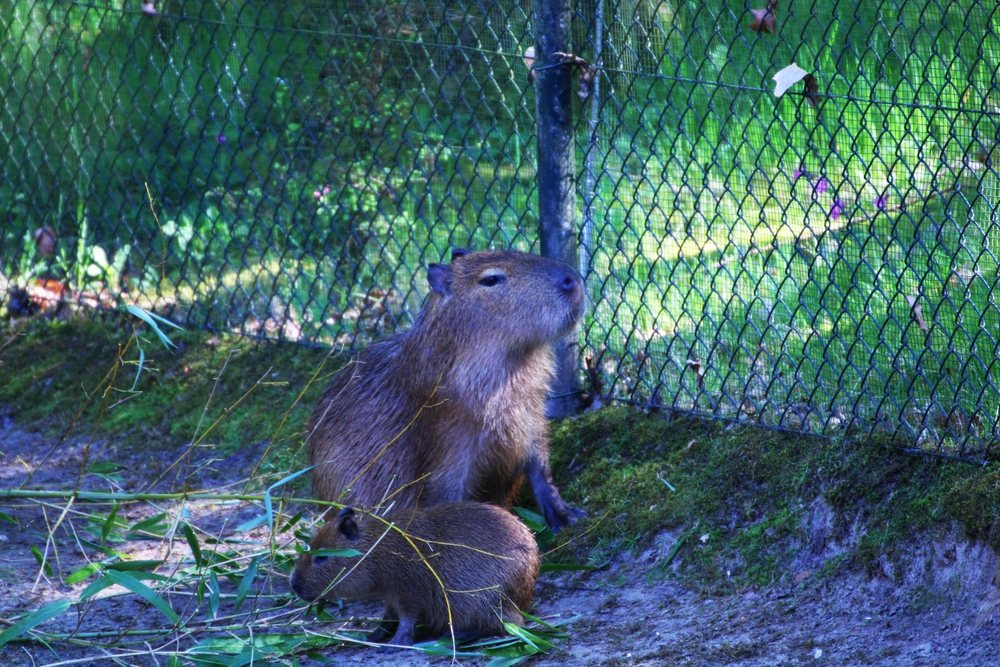
Lessons From the Wild
Nature never rushes. It simply unfolds. The friendship between the howler monkey and the capybara is not the result of strategy or design—it’s the byproduct of coexistence done right. The Denver Zoo staff crafted an environment that promoted safety, curiosity, and enrichment. Within that space of trust, love took root. That’s the first lesson: where fear is absent, connection flourishes. Humans are no different. We, too, bloom in environments where we feel seen and safe.
The second lesson is about balance. The capybara is grounded, literally and emotionally. Its slow, measured movements calm the air around it. The howler monkey, agile and expressive, brings vitality and play. Together, they demonstrate the beauty of complementary energy—each filling the other’s gaps. It’s a living metaphor for healthy relationships: not one overpowering the other, but both expanding through their differences.
The third lesson is that peace isn’t passive. True harmony takes awareness and intention. The capybara tolerates the monkey’s boldness; the monkey adjusts to the capybara’s quiet. That reciprocity is what makes their relationship sustainable. In human terms, it’s empathy in action. It’s the art of listening, adapting, and choosing kindness over control.
And finally, their companionship teaches us that connection doesn’t require perfection. These animals aren’t flawless; they have moods, instincts, boundaries. Yet, despite their differences, they remain close. That’s what makes their friendship so powerful—it’s real, not idealized. If we can learn to love with that same acceptance, our relationships, too, could mirror the wild: imperfect but enduring, simple but sacred.
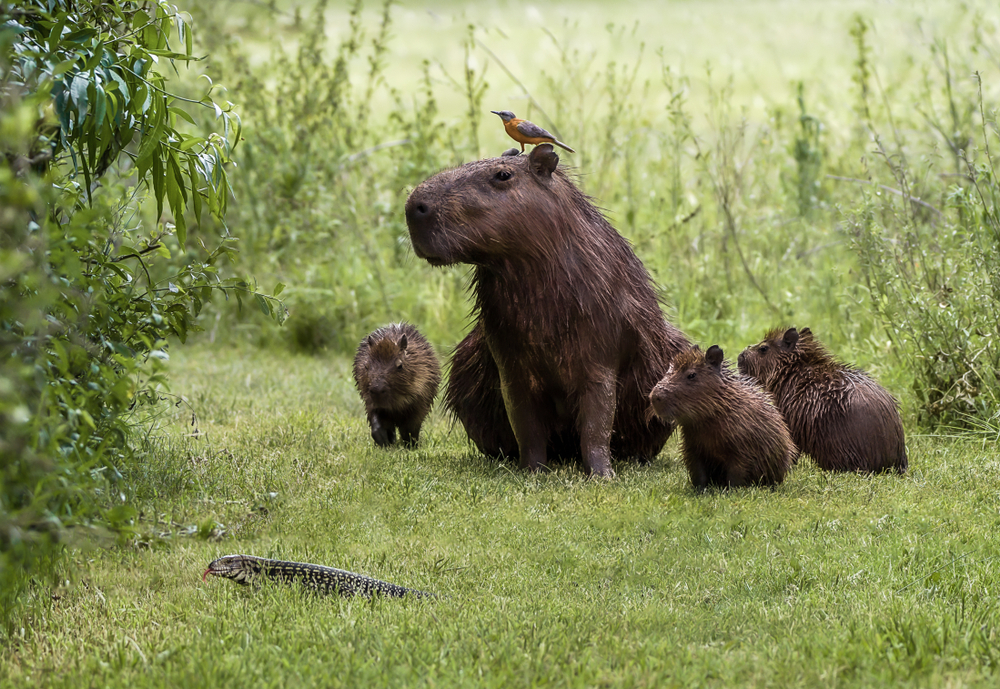
Beyond the Zoo: A Call to Action
When stories like this go viral, they give us a fleeting rush of joy before disappearing into the digital tide. But this one deserves to stay with us longer. The image of a howler monkey gently resting on a capybara’s back is more than cute—it’s a symbol of what’s possible when life chooses compassion over caution. Dr. Emma Seppälä from Yale University has written extensively about the biological necessity of social connection. Compassion, she explains, isn’t just emotional—it’s physical. It strengthens the immune system, reduces anxiety, and extends life expectancy. In a way, the Denver Zoo’s duo are living proof of that science—thriving not just because they coexist, but because they connect.
We often talk about saving the planet, protecting nature, or conserving species. But maybe nature is also trying to save us—teaching us, in small, silent gestures, how to live more fully. These two animals didn’t plan a message for humanity, but their friendship delivers one anyway: You don’t need to look alike to love alike. Their bond invites us to stop othering, to begin belonging.
Imagine a world where humans treated difference with the same tenderness this monkey and capybara show each other. Where political borders and cultural lines became as irrelevant as species boundaries in that Denver enclosure. The first step toward such a world isn’t global policy—it’s personal practice. It’s saying hello to a stranger, listening without judgment, forgiving before it’s asked for.
So the next time you find yourself scrolling through noise and negativity, remember these two creatures. Remember that somewhere in Denver, a howler monkey sits on a capybara’s back, unbothered by the chaos of the world. They’re not thinking about status, tribe, or difference. They’re simply together. And in their togetherness lies a quiet revolution—one that whispers: connection is our nature, compassion our birthright, and love our most instinctive act of survival.
Loading...

